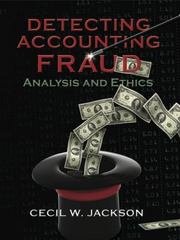Question
Stellenbroach Family ( SF ) owns a 25-hectare piece of prime land that is considered suitable for bothagricultural and residential purposes. Currently, only two
Stellenbroach Family ("SF") owns a 25-hectare piece of prime land that is considered suitable for bothagricultural and residential purposes. Currently, only two of these 25 hectares are in use, and primarilyfor residential dwelling. SF has now decided to make productive use of the land and will soon establisha wine and juice making group comprising of two major operating companies. SF has also consultedwith McKingsley Business Consultants ("MBC"), a leading business consulting firm to assist with itsbusinesscase.Companieswithin theSFgroupwilladopttheabsorptioncostingmethodandthefirst-in-first-out(FIFO)inventoryvaluation method.
- EXTRACTFROMTHEBUSINESSCASEFORSF-WINERY
One of the group companies to be formed is SF-Winery, whose operation will consist of a vineyardwhere white grapes will be produced; wine cellars and juice tanks wherein white grapes will beprocessed and subsequently fermented to produce semi-sweet white wine ("SWW") and white grapejuice ("GJ"). In each financial year, SF-Winery will have one harvest period with an expected averageyield of 600 tonnes of white grapes. Amongst others, the costs relating to the process of wine and juicemaking include soil preparation, seeds costs, seed planting costs, irrigation costs, pest control costs,farm labour costs, harvesting costs and quality inspection costs. After At quality inspection (the gradingprocess after harvest), grapes are separated into three grades, namely, Grade A (80% of the harvest);GradeB(16%oftheharvest)andGrade C(4%ofthe harvest).
Only Grade A grapes will be fermented to produce the semi-sweet white wine. During the fermentationprocess, a small quantity of Grade A grapes will result in waste. This waste has no sales value and willbe discarded at a cost of R0,15 per kilogram. Thereafter, wine will be stored in barrels to mature andwillonlybebottledjustbeforesale.Theexpected sellingpricetowineretailersisR65perbottleofsemi-sweetwhitewine.GradeBgrapeswillbeprocessedfurthertomakegrapejuice,andcelluloseandotherorganic compounds are added to the grape juice to give it a rich and natural taste (grape juice will besold to local retailers at R30 per litre). The annual production is expected to match the annual demandat 304 000 litres of semi-sweet white wine and 152 000 litres of white grape juice. Grade C will be soldtopigfarmers atR4,50 perkilogram.
question :
Withreferencetotheinformationunder"ExtractfromthebusinesscaseforSF-Winery"(section1)above,how would you drafta memorandumtothemanagementofSF whereinyourecommend andmotivate for the most appropriate costing system that SF-Wineryshould use for the allocation of production costs of SWW and GJ. have to no need for any Calculations and other costing systems that are not considered appropriate, should not beaddressed.but your the memorandum(using informationprovided)mustincorporate:
- A discussion of points from the information that support yourrecommendation;
- Anoutlineofthecostaccountingtreatmentofthedifferent productsoutlinedinthe"Extract fromthebusiness caseforSF-Winery";
- Identificationofpossiblemethodsforallocatingcosts toSWWandGJ;and
- Referencetosupportingfiguresfromtheinformationwherenecessary.
Step by Step Solution
There are 3 Steps involved in it
Step: 1

Get Instant Access to Expert-Tailored Solutions
See step-by-step solutions with expert insights and AI powered tools for academic success
Step: 2

Step: 3

Ace Your Homework with AI
Get the answers you need in no time with our AI-driven, step-by-step assistance
Get Started


